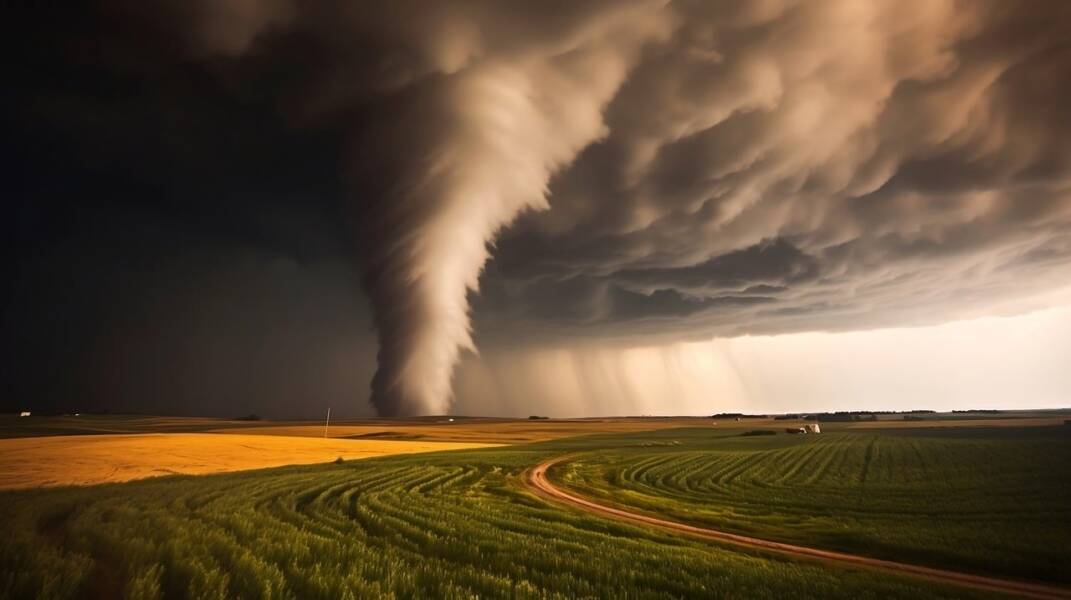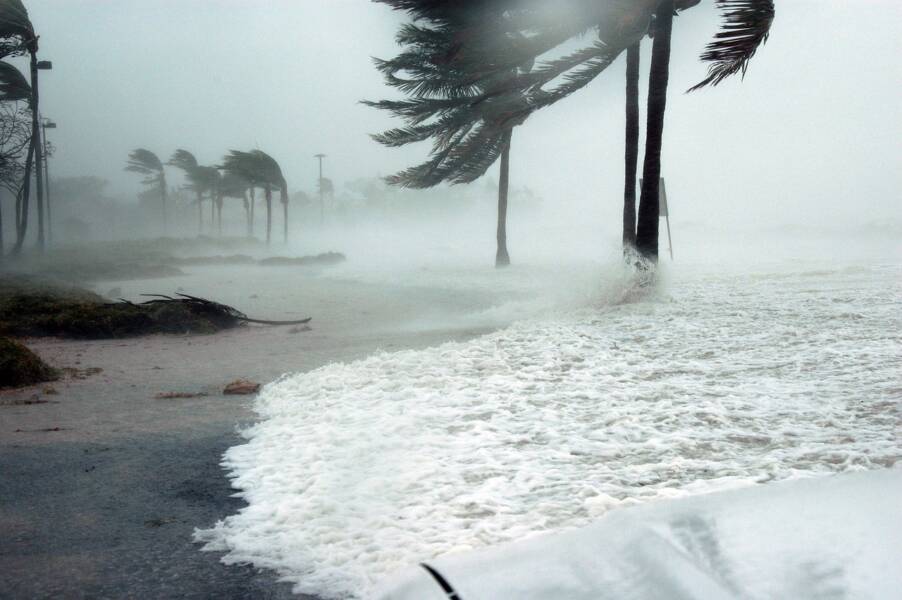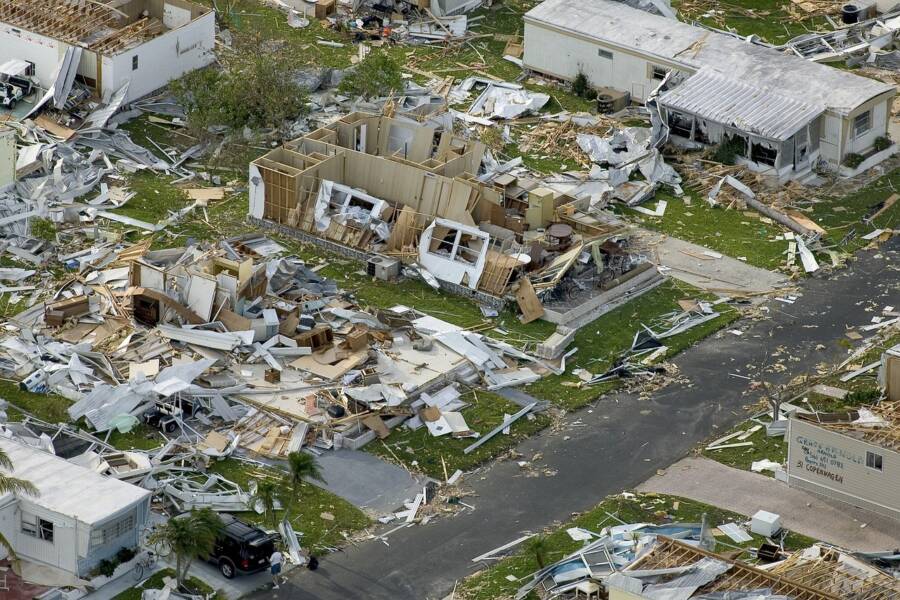Katrina, Sandy, Mathew, Harvey. These are all names of high-intensity hurricanes that have hit the United States of America in recent years.
But why is the US hit so hard by so many hurricanes and tornadoes?
Firstly, we need to know how these wind and rain storms form. Hurricanes are caused by warming ocean waters in intertropical latitudes. During the spring months through early summer in the Northern Hemisphere, the North Atlantic Hurricane Season occurs.
At this time, the incidence of sunlight increases and, therefore, the temperature of the ocean’s waters increases. With an average temperature of 27 °C, these masses of hot water begin to evaporate, and the water vapor, when condensing, forms large clouds, which can reach 500 kilometers in length.
If you are curious about this subject, you can check in real time about tornadoes in the United States on the tornadohq website.
Warmer, more humid air becomes less dense and therefore begins to rise, reducing atmospheric pressure at the surface and creating an area of low pressure. On the contrary, in the surroundings of this surface, there is a region of cold air and high atmospheric pressure. This atmospheric dynamics causes air masses to move from the high pressure region to the center, forming the hurricane’s fast winds.
These winds will carry the moisture present on the surface of the ocean waters and accentuate the process of formation of large rain clouds and an increase in temperature, giving rise to hurricanes. Below the clouds, there is the eye of the hurricane, about 20 kilometers wide, and this centralized area forms a column of air, where there is a lot of heat and no rain, which contributes to feeding the hurricane system with water vapor. As the Earth’s rotation moves from west to east, the hurricane moves counterclockwise in the Northern Hemisphere and forms a funnel, where its walls reach winds of up to 250 km/h.
The hurricane tends to seek regions where the water is warmer to continue its cycle, which is why it moves from the ocean towards the continent, which tends to be warmer due to the continentality effect. Upon reaching the American continent, especially the east and south coasts and the Midwest, in the Great Plains, the hurricane loses some strength and dissipates, but causes flooding and damage, leaving thousands of dead and homeless.
The formation, duration and dissipation time of a hurricane is sufficient for it to be predicted by monitoring agencies, however this does not prevent the destructive power of this meteorological event. Hurricane Harvey, which hit Texas in August 2017 with its approximately 320 km in diameter, it caused great damage in the city of Houston. After that, the hurricane lost its strength and became a tropical storm.
In 2005, Hurricane Katrina hit the city of New Orleans, located below sea level. The dikes that protected this city could not withstand the force of the storm and broke, displacing half a million inhabitants and leaving many dead. Katrina was considered one of the most devastating hurricanes of the century. The strength of hurricanes is measured by the Saffir-Simpson table, with a scale of one to five. The name of this table is a tribute to the two researchers at the US National Hurricane Center who created it.
Below we will see 5 factors that contribute to the frequent occurrence of tornadoes in the United States:
Topography:
The geography of america favors the formation of tornadoes. The mixture of intensive plains within the Midwest and South, together with the presence of the Rocky Mountains to the west, creates ideally suited situations for the event of climate methods vulnerable to producing tornadoes.
Air mass clash:
The USA experiences the collision of heat, moist air plenty coming from the Gulf of Mexico with chilly air plenty from Canada. This conflict of various kinds of air creates atmospheric instability, which is a key ingredient for the formation of extreme thunderstorms and tornadoes.
Continental local weather:
The USA is huge and has a continental local weather, that means it experiences a variety of temperatures all year long. This variation contributes to atmospheric instability and will increase the probability of extreme storms, together with tornadoes.
Twister seasons:
In america, there are particular durations of the 12 months when atmospheric situations are extra conducive to the formation of tornadoes. “Twister season” usually happens within the spring and early summer time when temperature adjustments and humidity are most excessive.
Climate methods:
The presence of climate methods resembling chilly fronts, electrical storms and supercells contributes to the formation of tornadoes. When these methods work together in appropriate areas, situations are favorable for the prevalence of tornadoes.
Twister
The United States is also a champion in receiving twister. According to the American Oceanic and Atmospheric Agency (NOAA) and the National Meteorological Service, responsible for measuring the intensity, monitoring and issuing warnings to the population about storms, there are around 1,200 tornadoes per year. The incidence of tornadoes in the USA generally occurs in the Midwest of the country and near the Rocky Mountains, during the months of April to September.
A tornado is also a large whirlpool of air, but, unlike hurricanes, it is formed over land. Tornadoes happen when a column of air that spins very quickly joins, at the same time, a rain cloud and to the ground. In the shape of a funnel and wind spiral, this phenomenon is much smaller than hurricanes, with extensions of approximately 100 meters.
Because they form and last quickly, tornadoes are less predictable than hurricanes and, therefore, also cause disasters. They are classified according to the Fujita scale, which varies from zero to five, however the majority of tornadoes that hit American soil are identified, according to this scale, as F0 or F1, that is, with weak destructive power. However, extremely destructive tornadoes also hit the United States. NOAA researchers concluded that tornadoes of this type are formed from supercells, types of thunderstorms that move in circles.
If you watched the movie Twister (1996), you may remember a scene in which a cow flies when it is “captured” by the tornado. This is possible because the speed on the walls of tornadoes can reach 500 km/h. In 2013, in Oklahoma, an F5 tornado, with a diameter of 4.2 km, hit the city and devastated vegetation, buildings and even entire neighborhoods.
In December 2021, a series of tornadoes hit six American states, killing around 100 people. The state of Kentucky was hit hardest, where homes, industries and entire neighborhoods were destroyed by winds of more than 400 km/h. The tornado recorded in Kentucky traveled more than 200 miles and was classified as an F5.
The largest tornado ever recorded in the United States occurred in 1925. Called the Tri-State Tornado, it covered 352 kilometers, crossing the states of Missouri, Illinois and Indiana. In total, 695 people died and more than 2,000 were injured.
TechnologyHQ is a platform about business insights, tech, 4IR, digital transformation, AI, Blockchain, Cybersecurity, and social media for businesses.
We manage social media groups with more than 200,000 members with almost 100% engagement.











































